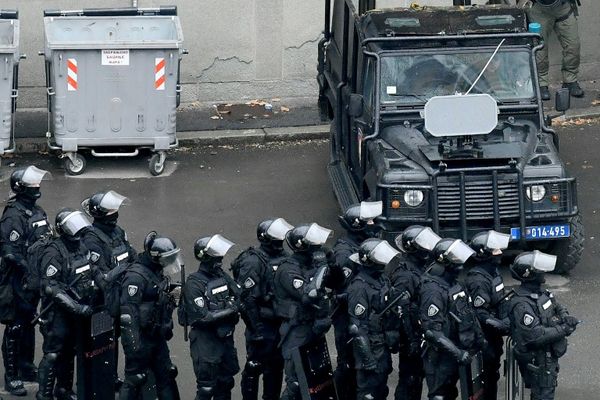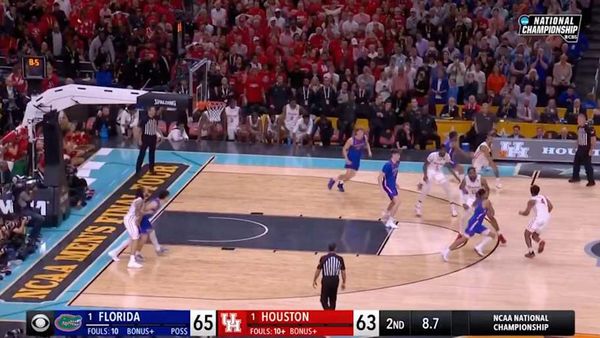What will the Great Barrier Reef look like at the end of this century if sea temperatures continue to rise?
According to one researcher, the reef could see an abundance of soft fleshy corals overtaking the hard branching corals that form coral reefs.
If that were to occur, the change would present a new set of challenges.
Vanessa Clark, a PhD candidate at University of Queensland (UQ), is researching coral at Heron Island.
She works from a science centre situated in the middle of the southern Great Barrier Reef.
Over the past two decades, the Great Barrier Reef has experienced an increasing number of bleaching events.
The latest was as recently as this summer, when 91 per cent of the reef from the Torres Strait to east of Gladstone, off the coast of Queensland, was impacted.
While the 2021–22 bleaching event did not lead to coral mortality, it has scientists concerned.
"It is terrible, and it does lead to mortality, but corals can rebound after bleaching," Ms Clark says.
"Are we going to have really fleshy corals or [are we] going to have really branching corals?"
Ms Clark has taken corals from different habitats on the reef at Heron Island, about 50 kilometres off the central Queensland coast, to see how they grow in different environments.
In the laboratory, she takes three-dimensional photographs of the specimens and studies their physiology and genetics.
From her experiments, Ms Clark has found that corals living on reef flats are exposed to higher heat and higher carbon-dioxide levels. They also tend to produce more tissue.
"They put a lot of stores into their fatty tissues," she says.
"[Similar] to when bears eat a lot to survive through winter, [corals] do a similar thing in terms of trying to survive the bleaching."
While this approach to survival may sound sensible, the problem is that the process stops corals from calcifying.
Hard corals take calcium from the seawater to form their limestone outer skeletons, the basis of coral reefs.
"That calcification is really key in terms of the rigour of the reef. [It is] the structure that all the little fishes live in," Ms Clark says.
She says researchers will need to look at ways to help surviving reefs to calcify.
"If we are losing these [reefs], we need to look at what stocks would be able to potentially repopulate future reefs."
Is coral relocation a possibility?
Morane Le Nohaic, a fellow UQ PhD candidate, is studying how changing temperatures affect coral fertility.
She has set up aquariums to mimic different climate scenarios, with tanks that reflect what temperatures were like in 1970, to others with the predicted temperatures in 2050, and a tank with the current sea temperature.
In other tanks, she characterises the current bleaching events happening in the Great Barrier Reef.
The goal is to find which corals are more robust against climate change.
But she says introducing a new species to a different area could be problematic.
"That can create a lot of competition, especially Acropora aspera coral that grows fast and takes up a lot of space," she says.
Ms Le Nohaic is referring to the species of coral she is working with, which is a type of hard staghorn coral found throughout the Great Barrier Reef.
"If we select a [single] species that is resistant to climate change and we want to reproduce it en masse to receive new corals and new reefs, it can be problematic if you're just selecting one species that will be very abundant.
"What you want is diversity, and this is why we do research."
Emission reductions not enough
Neal Cantin, a coral ecophysisiologist, is working on finding that diversity.
Dr Cantin has been working for the Australia Institute of Marine Science for the past 10 years, but has more than 20 years of experience with the Great Barrier Reef.
He says widespread mass coral bleaching events are happening more frequently, and the area affected by extreme heat stress is increasing at a faster rate than expected.
“What we’re starting to see happen with the more recent bleaching events … is that separation of sensitive and more-tolerant coral species is disappearing,” Dr Cantin says.
He says looking for more robust corals that could be relocated to struggling reefs is an essential piece of research.
"We have documented the current rate of ocean warming. We know that it is essential to drive emissions reduction to help the future of coral reefs," Dr Cantin says.
"But emissions reduction on its own on the current paths and trajectories and forecasted warming rates are not going to be enough for reefs in the future."
Dr Cantin says that if temperatures hit 3 degrees Celsius above what was measured in pre-industrial times, coral will have a hard time surviving global warming over the next 50 years.
"We know now that we need these reef restoration and adaptation research programs to help protect reefs for the future," he says.







